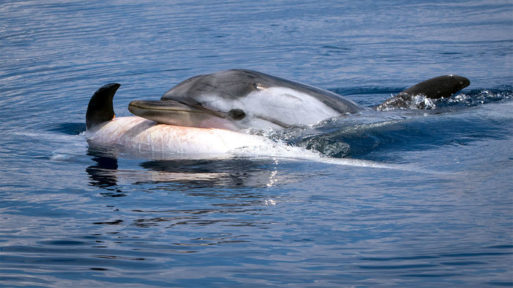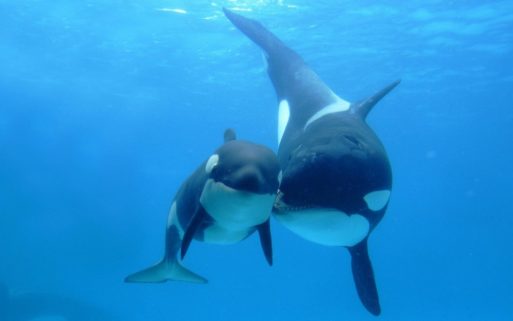Recently the world watched as J35, a 20-year-old orca also known as Tahlequah, carried her dead calf for 17 days on what experts have termed a “tour of grief.” Hearts broke around the globe for the mother whale, and this has brought renewed attention to the plight of orcas and other aquatic mammals as they struggle to survive. The story of J35 and her dead calf has also opened many eyes to a phenomenon that experts say they’ve observed in 20 species of cetaceans (dolphins and whales) — these animals often exhibit “postmortem-attentive behavior,” which suggests they may be experiencing grief in much the same way we do as humans.

Credit: Silvia Bonizzoni/ Dolphin Biology and Conservation
Do Animals Mourn Their Dead?
Empathetic behavior among mammals has been well documented – elephants, for example, are known to ritualize death and help others in distress, and many scientists are convinced this is solid evidence of true empathy. This is the case for several species of mammals who live in highly-socialized groups, including dolphins, orcas, and other whales.
Most humans have long believed that awareness of our own mortality is a uniquely human trait. Many philosophers and scientists have been reluctant to accept that other mammals experience grief as we humans do, but this is changing as more and more of what can easily be seen as mourning is documented among different species. The story of J35 has sparked a new conversation concerning cetaceans and death, and many scientists are now citing studies that suggest they mourn their dead, just like us.
Grief and Mourning in Whales and Dolphins
According to Melissa Reggente, a biologist at the University of Milano-Bicocca in Italy and co-author of a 2016 study on cetaceans and grief, “They are mourning. They are in pain and stressed. They know something is wrong.” And while much of the evidence of these post-mortem behaviors is anecdotal, it’s undeniable that cetaceans do seem to mourn their dead, and their behavior is often inexplicable.
Reggente cites several cases of unexplainable behavior in cetaceans as proof of true grief: In one case, short-finned pilot whales made a protective ring around a mother and her dead calf. In another, a spinner dolphin in the Red Sea pushed a dead calf toward a boat; when the vessel’s occupants lifted the carcass on board, the entire group of nearby dolphins circled the boat before swimming away.

Credit:
Ecofuturedevelopment.com
Another researcher, Robin Baird, agrees with Reggente’s assertion that cetaceans do feel grief and mourn the loss of their dead, especially in cases involving a mother and her dead calf. Among other incidences of grieving mothers, Baird witnessed a mother orca carrying a dead calf in her mouth in 2010. Baird says that since a mother orca and her offspring may spend their entire lives together, they experience significant grief when one dies: “The animals go through a period where they’re experiencing the same kind of emotions you or I would when a loved one dies.”
While the idea of animal grief may seem foreign to many, more and more scientists and philosophers are re-examining the possibility that other mammals may be more like us than we think. What’s really fascinating about this is that while we certainly stand to learn a lot about grief and empathy in other mammals, they may also have valuable things to teach us about being better humans.

 Grief and Mourning in Cetaceans
Grief and Mourning in Cetaceans


 First the Wealth Gap, Now the U.S. Has a Growing Health Gap
First the Wealth Gap, Now the U.S. Has a Growing Health Gap
 How to Comfort A Dying Loved One
How to Comfort A Dying Loved One
 Our Annual Seven Holiday Gifts for Someone Who Is Grieving, 2024 Edition
Our Annual Seven Holiday Gifts for Someone Who Is Grieving, 2024 Edition














